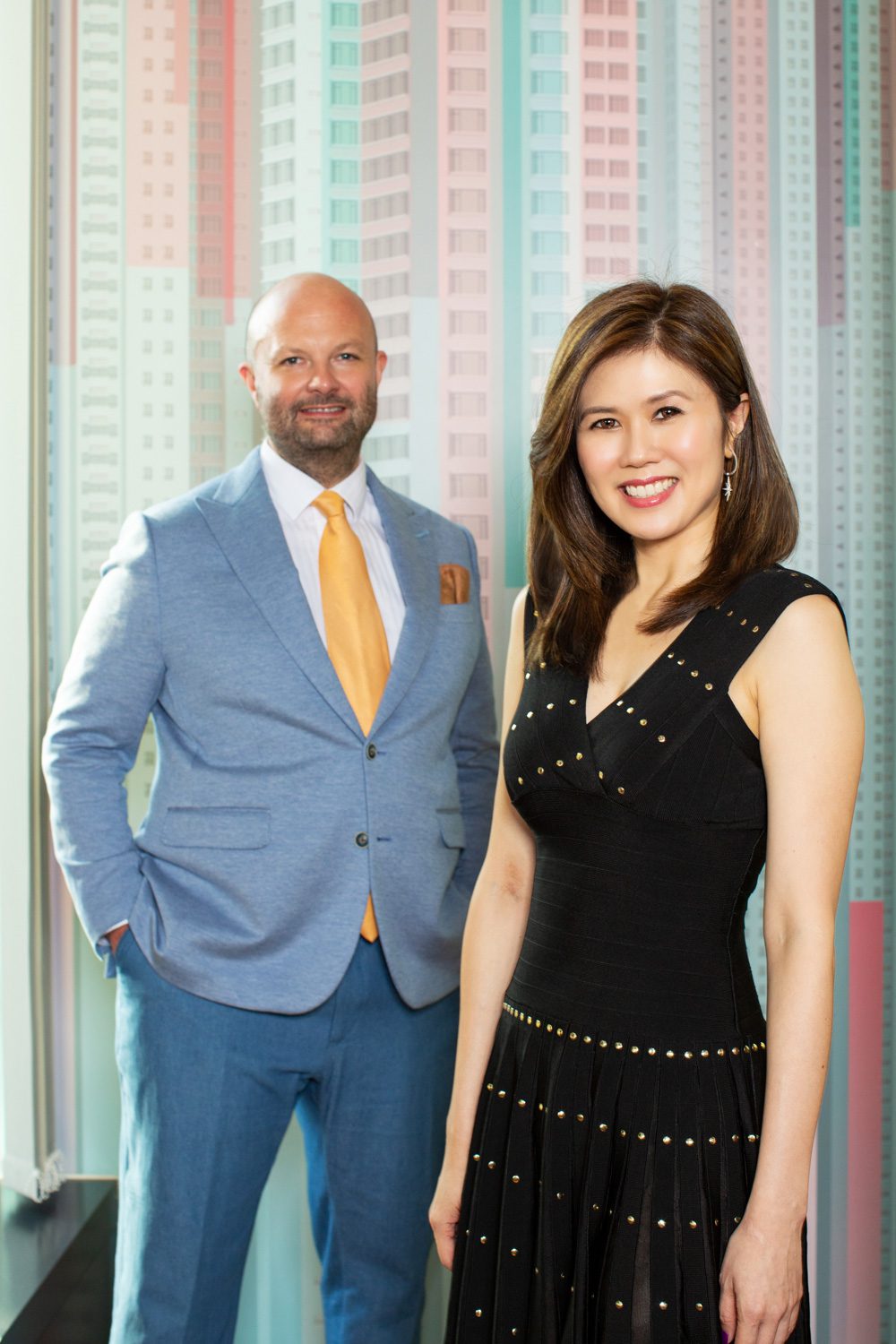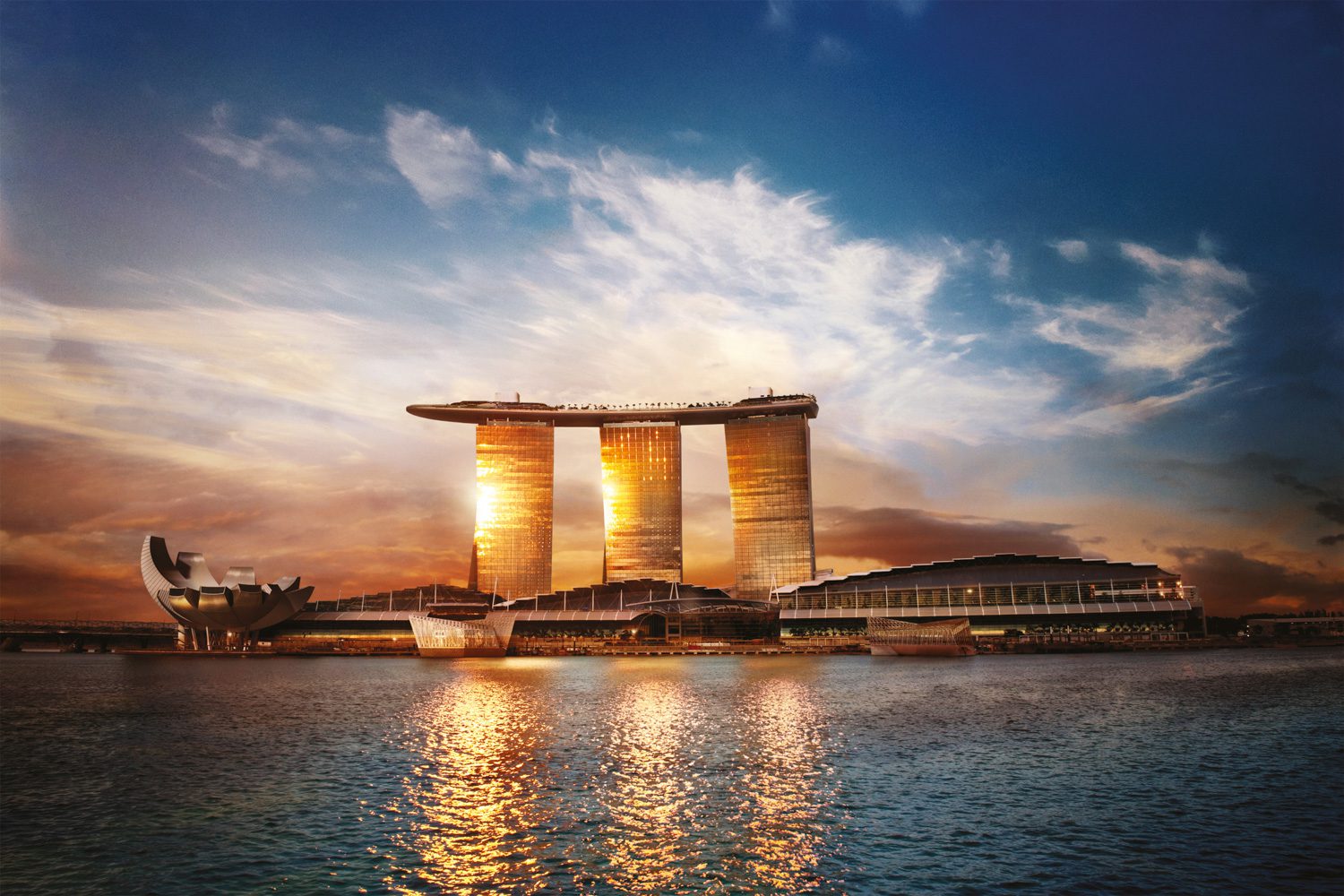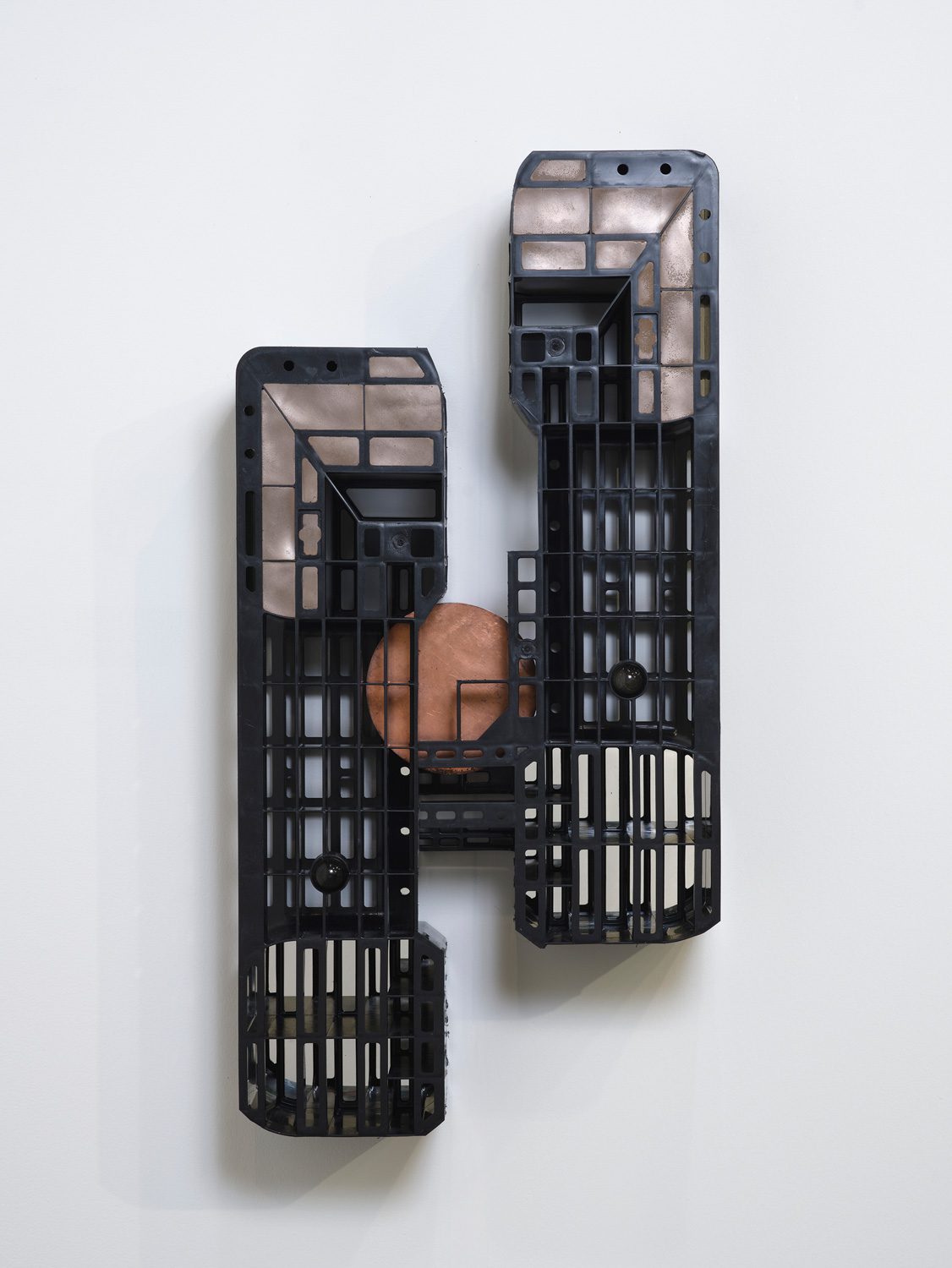
ART SG Co-Founder Magnus Renfrew and Director Shuyin Yang | Photo: Joyce Yung
ART4D TALKS WITH MAGNUS RENFREW, CO-FOUNDER OF ART SG AND SHUYIN YAN, DIRECTOR OF ART SG, TO EXPLORE THEIR VISIONS, THE AIMS OF HOSTING THE INTERNATIONAL ART FAIR IN THE ASIA-PACIFIC REGION, INCLUDING THE CHALLENGES OF ORGANISING A LARGE FAIR AFTER THE EPIDEMIC CRISIS
INTERVIEW AND TEXT BY KAMOLTHIP KIMAREE
PHOTO CREDIT AS NOTED
(For Thai, press here)
It was a huge challenge for ART SG after human activities had been halted for a while due to the epidemic crisis. In the past three years, various forms of social interaction activities have been carried over online, including fairs and art exhibitions. And, of course, many people have gotten used to purchasing, visiting the exhibition, and having social interaction through a virtual world.
In January 2023, ART SG will invite everyone back to actual social interaction and experience the spirit of art in the real world. Through conversations with art4d, MAGNUS RENFREW, co-founder of ART SG, and SHUYIN YAN, Director of ART SG, share their views about the strategy for making the art fair a success.
art4d: What is the most distinguished aspect of the art scene in the Asia Pacific region?
Magnus Renfrew: The Asia Pacific region is an incredibly broad geography and home to half the world’s population. This is reflected in the rich diversity of cultural production. It also makes it a difficult question to answer. Across the Asia Pacific, the audience for contemporary art is developing dramatically. The region is now very much on the radar of the global art world, with galleries opening in major centres around the region. As home to many of the fastest-growing economies in the world, it represents the greatest opportunity for market growth. The energy, excitement and potential in the Asia Pacific are unparalleled.
Shuyin Yang: There has been increased global interest in Southeast Asian artists and art spaces over the past few years, especially in contexts relating to cultural dialogue and exchange and regional engagement. Southeast Asian artists have been prominently featured in international biennales and museum exhibitions, such as Pinaree Sanpitak who was selected for inclusion in “The Milk of Dreams” curated by Cecilia Alemani at this year’s 59th Venice Biennale, and the New York-based Asia Society Triennial in 2021 which featured artists including Christine Ay Tjoe, Anne Samat, Jason Wee and Dinh Q. Le. There is an established base of sophisticated collectors in the region who have been following Southeast Asian art practice for many years, but we have also observed a younger generation of new art lovers who are searching for artists and works which resonate culturally for them, and which are accompanied by the opportunity to visit the artists in their studio and engage them in conversation. This energy and curiosity by collectors wanting to engage with regional art practice and Southeast Asian artists making waves in the international landscape are defining features of the current art scene.

Marina Bay Sands | Photo courtesy of Marina Bay Sands
art4d: Could you share some differences observed in the art market cycle before and after the year 2000?
MR: Above and beyond the year 2000, the year 2008 marked the biggest movement in the market with the launch of ART HK, which really helped to put Asia on the agenda of the international art world and the global financial crisis. After 2008 galleries from Europe and America looked to expand their markets and began to take Asia more seriously. Likewise, the tastes of collectors from Asia broadened from being largely domestically focused to being more open to cross-cultural collecting. There was an increasing acknowledgement of the importance of the gallery’s role in promoting an artist’s practice for the long term.

PixCell-Reedbuck (Aurora) 2020 by Kohei Nawa at SCAI The Bathhouse | Photo: Nobutada Omote
SY: Over the past three decades, Singapore’s art scene has evolved tremendously. The country’s status as a leading centre of wealth is further accentuated by its rapidly developing cultural scene. The demographic of collectors and art-loving audiences has expanded tremendously in Singapore and Southeast Asia over the past few years, with more young and new buyers entering the scene as well as recent international arrivals, such as Indonesian and Chinese collectors and wealthy individuals who have relocated to Singapore. The scale of ART SG’s inaugural edition and the commitment of regional and global exhibitors testifies to the strong potential of Singapore as a host city for a major international art fair.
art4d: What is the most powerful tool or strategy used by ART SG to support artists and the various regional markets, particularly Thailand?
MR: One of the most powerful tools that an art fair has at its disposal is the ability to put the spotlight of the international art world onto the city and region it takes place and onto the wider cultural scene, including artists, galleries, and institutions. Through bringing the international art world to Singapore, it is our aspiration that leading western galleries and collectors will become much more aware and more curious about what is happening in Southeast Asia. This curiosity will lead to a greater exploration of the art scenes in Southeast Asia. Through expanding the audience and market for art and culture in Southeast Asia, ART SG can play a role in building a buying audience that can sustain artists and their practice.
SY: ART SG will be able to play an important role in placing a spotlight on Southeast Asian artists by bringing together thoughtfully curated presentations from established, and emerging spaces around the region, such as Richard Koh Fine Art’s (Singapore, Kuala Lumpur, Bangkok) curated Southeast Asian group show with a special focus on the Indochina region, including names such as Natee Utarit, Svay Sareth, Wah Nu, and UuDam Tran Nguyen; Yeo Workshop’s (Singapore) showcase “From the Land of Gold Below the Winds in South Seas,” which juxtaposes the historically and culturally interrogative practices of multi-disciplinary artists from Singapore and Southeast Asia, such as Thai artist Santi Wangchuan, and Simulacra by Warin Lab (Bangkok) which is a new space from Thailand focusing on sustainability issues and the ecosystem. The dual exhibition between Arahmaiani, one of Indonesia’s most respected multi-disciplinary female artists, and Thaiwijit Puengkasemsomboon, a renowned Thai painter, creates a dialogue that reflects on the emergency of environmental destruction while highlighting their localities and the small communities embedded within, who are most at risk.

Circuit (New Moon), 2021 by Leelee Chan at Capsule Shanghai | Photo: South Ho
Other highlights can be found in regional stalwarts Yavuz Gallery, Gajah Gallery, FOST, and Sullivan & Strumpf, to new emerging spaces such as Tropical Futures Institute and Cuturi Gallery will be emphasising artists from Singapore and around the region. In addition, Southeast Asian artists will also be prominently featured by internationally renowned galleries who represent them, which testifies to the global interest in artistic practice from the region, such as Dinh Q. Le featured by P.P.O.W and Sopheap Pich with Tomio Koyama Gallery, Mit Jai Inn and Sawangwongse Yawnghwe at TKG+, and Jakkai Siributr at Flowers Gallery.
Within ART SG PLATFORM, a sector for dynamic site-specific installations and large-scale sculpture, “Kapok”, a seminal work by Cambodian artist Sopheap Pich will be presented by Tomio Koyama Gallery. Comprised of a repurposed wooden boat redesigned as an installation based on the shape of the ‘kapok’ fruit, using the artist’s idiosyncratic mediums of rattan and bamboo, the work discusses Southeast Asian rural life, the history of Cambodia and the artist’s relationship to his native region.
art4d: What do you expect to see in the art industry in the near future?
MR: We expect to see an increased awareness of the importance of Asia over the coming years and an increased engagement internationally with artists from Southeast Asia. Galleries from outside of Asia will now participate in fairs in the region throughout the year, recognising the incredible potential of the region.
SY: The art scene is at an interesting juncture, just emerging from post-pandemic and dealing with the reopening of geographical borders and the resumption of travel. Collectors are keen for in-person experiences, engagement, and the opportunity to view artworks and speak with artists and galleries face to face. At the same time, artworks articulating the pandemic experiences and focusing on the tension of these, in contrast with experiences of reopening, are being created by artists, which will foster greater dialogue and understanding across different communities.

I wish I had learned more trivia, 2022 by Xu Zhen at Madein Gallery | Photo courtesy of MadeIn Gallery
art4d: What are the key success factors of ART SG?
MR: Through adhering to international standards of practice with our rigorous selection process, we have assembled an incredible lineup of the most significant galleries from around the world. With 160+ galleries from 30 countries, it is one of history’s biggest art fair launches. Organised by the Art Assembly. ART SG is part of an expanded network of six art fairs across Asia, and a VIP Relations network in a further five countries, meaning that we are actively engaging with collectors from right across the region year-round. We have been working through our networks to ensure strong international attendance. Galleries are looking first and foremost for sales, but they are also looking to build connections with collectors and curators, and we are working hard to deliver on all these fronts.

Pacific Ocean A, 2022 by Refik Anadol at bitforms gallery | Photo courtesy of the artist and bitforms gallery
SY: ART SG’s vision was to build upon Singapore’s natural positioning as a hub, and create a leading international art fair for the region to participate in, right on its doorstep and its own terms, which will connect Southeast Asia on to the international art world, with the best that it has to offer prominently highlighted and contextualised. We’ve aimed to curate the fair, so there is something for everyone – established and emerging collectors and also brand new art buyers – creating a platform with a strong global appeal but with a distinctive regional focus. Being able to realize this vision is key to the success of ART SG.
art4d: How does ART SG promote cross-cultural conversations?
MR: ART SG brings together different constituencies from across Southeast Asia, India and Australasia and, through the fair in Singapore helps them to connect with the rest of Asia and further afield. We have galleries participating from 30 different countries, and so in a sense cross-cultural is built into what we do. In addition to being a venue for commercial exchange, ART SG will also be an opportunity for cultural and intellectual exchange not only through the art on show but also through our expansive talks programs.
SY: The ART SG talks program was designed to promote cross-cultural conversations, engage with a diverse audience, and also to address as broad a range of viewpoints as possible regarding urgent issues and topics within our current art landscape. ART SG PERSPECTIVES: Reconnecting Southeast Asia and Asia Pacific is a series of conversations curated by Cosmin Costinas (Co-Artistic Director of the 24th Biennale of Sydney (2024) and former Executive Director of Para Site Hong Kong) and was conceived as a platform for some of the most active practitioners in our region to come together, post-pandemic, in an effort to reimagine our common geography, ways of working, and future exchanges.

Photo courtesy of ART SG











